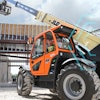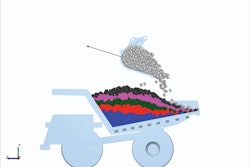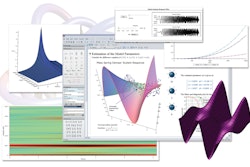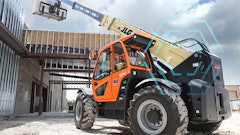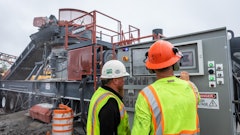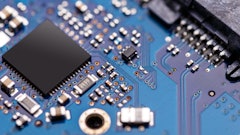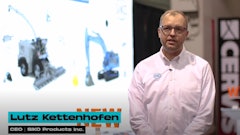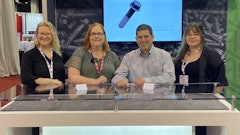The latest EDEM software release this spring from DEM Solutions Limited, the Discrete Element Method (DEM) specialist and market leader, majors on enhancing the connectivity of EDEM with other Computer Aided Engineering (CAE) tools. Version 2.6 implements the company’s strategy to make EDEM highly integrated with other CAE tools.
The new software, to be released globally to customers on April 10, 2014, offers the benefit of 40 additional and improved features increasing its usability, reliability, productivity and connectivity with other CAE tools. Enhancements have been made to the EDEM coupling interface, which provides the structure for coupling EDEM with other tools such as multi-body dynamics (MBD), computational fluid dynamics (CFD) and introduces a facility for sharing data with finite element analysis (FEA).
The challenge of bulk materials
Manufacturers of equipment designed to handle bulk materials (diggers, buckets, scrapers, bulldozers) face many challenges in resolving the optimal design. Simulation is an established way of investigating engineering challenges and providing insights into how designs will perform, before any financial investment and design time takes place in physically creating and building the equipment. The use of CAE tools such as finite element analysis (FEA), multi-body dynamics (MBD) and computational fluid dynamics (CFD) are well established in the engineering toolkit to aid design decisions.
The new software release extends existing FEA and MBD analysis to include the effects of interaction of bulk materials which is another new dimension and major advantage for engineers designing and optimizing equipment handling bulk materials, including coal, ores, soil, pellets, tablets, grains and powders, across a number of industry sectors.
DEM Solutions team of 20 plus technical experts have been developing the new, improved software since last year and have listened and responded to their global clients to add features and benefits which can assist all manufacturers of equipment designed to handle bulk materials.
EDEM - the missing link
Whilst the use of CAE tools such as FEA, MBD and CFD are well established in the engineering toolkit to aid design decisions, the effectiveness and impact of these various tools is limited if the designer is unable to simulate the interaction of the equipment with the material that it is intended to handle. Therefore, when it comes to handling or processing bulk materials, it is critical to have the feedback and forces of the material in its interaction with the machine components.
The EDEM software platform brings the benefits of DEM simulation to manufacturers as a tool that uniquely simulates and analyzes the behavior of many forms of bulk materials providing the means to reduce dependency on physical prototyping, shortening design cycles and leveraging design know-how in the simulation environment. When used with other CAE tools, EDEM provides crucial insight and information on the forces and loading on equipment caused by the interaction with the bulk material. Bringing EDEM into play with other CAE tools adds critical insights for the engineer and improves the confidence in the design.
Richard LaRoche, DEM Solutions VP of Engineering & Software Development, says, “Our strategy is to complement other CAE tools by providing robust integration of EDEM simulation. Our customers who design equipment for handling bulk material have suffered from an incomplete view of how the equipment will perform. Over the past several years we have witnessed the benefits of EDEM integration in generating new solutions combining particle and machine dynamics to result in powerful, new insights into the machine-material interaction. The new release extends our ability to address this challenge.
In line with our collaborative approach, we’re working with our technology partners - leading CAE software companies- to create and enhance co-simulation solutions to allow equipment design engineers to be more productive and create better designs.”
DEM Solutions releases Version 2.6 of its EDEM software
Version 2.6 of DEM Solutions' EDEM software enables integration with other computer aided engineering tools.
Apr 11, 2014
Latest in Software
IoT System for Fleet Management Logistics
March 12, 2025
CNH Launches AI Chatbot to Provide Instant Customer Support
January 15, 2025

